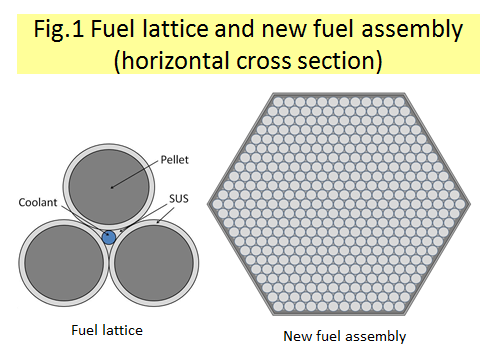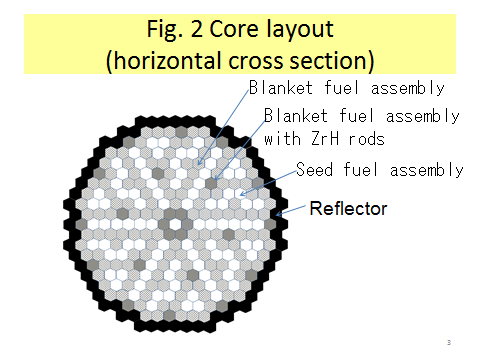High plutonium breeding of light water cooled reactors

Professor Oka and his research team at Waseda University have succeeded in developing the world's first conceptual nuclear reactor design of high plutonium breeding by light water cooling.
Professor Oka's research team succeeded to develop the conceptual nuclear reactor design of high plutonium breeding by light water cooling for the first time in the world. He devised a new fuel assembly where fuel rods are closely packed for reducing reactor coolant to fuel volume fraction for high breeding. With computational analysis he succeeded high plutonium breeding with light water cooling. The study will open the way of commercialization of fast reactor and nuclear fuel cycle for peaceful use of nuclear energy based on the mature light water cooling technologies. The result of the study was published in January issue of Journal of Nuclear Science and Technology of Atomic Energy Society of Japan (AESJ) , entitled "Plutonium breeding of light water cooled fast reactors".
Fast Breeder reactors (FBR) produce more fissile material than consuming, while producing electric power. It is a "dream of nuclear power". The main line of FBR development is the liquid metal cooled fast breeder reactor (LMFBR) . It is, however, not yet commercialized because of the complexity of the plant due to using liquid sodium as the coolant.
High plutonium breeding by light water cooling has been studied for many years, but not yet attained. Nuclear power plants and fossil fired power plant use water as the coolant. It is good to develop fast breeder reactor based on the experience of water coolant technologies.
Commercialization of nuclear fuel cycle and fast breeder reactors are important for reducing the amount of spent nuclear fuel of light water reactors (LWR) as well as the efficient utilization of uranium resources. Nuclear power utilization is in progress in many developing countries. Commercialization of spent nuclear fuel reprocessing in advanced countries enhances the nuclear security in the world.
High conversion light water reactors have been studied for many years since 1970 at research institutes and industry in Japan. The highest breeding characteristics were reported by the conceptual design study of the doubly axial heterogeneous core of a reduced moderation boiling water reactor (RMWR) . The compound system doubling time (CSDT) was, however, approximately 245 years. It is substantially longer than that of LMFBR.

New concept
Breeding characteristics increases with decreasing the water to fuel volume ratio. Tight fuel lattice with narrow gap between fuel rods was adopted for RMWR. For further decreasing the water to fuel volume fraction, a new fuel assembly of closely packed fuel rods was devised. The new fuel assembly and its fuel lattice consisting of three fuel rods are depicted in Fig.1. The coolant flows through the central hole of fuel lattice. The integrity or the leak tightness of the fuel rod is maintained as the conventional fuel rod where both ends of the fuel cladding tube are welded by end plugs.
The reactor design was carried out by computational methods for the cores with new fuel assemblies. The highest breeding characteristics are obtained for the core layout of the fuel assemblies in Fig. 2. The comparison of the characteristics with the RMWR is given in Table 1. The compound system doubling time is 43 years. It is substantially shorter than that of RMWR, 245 years.
Goal of breeding characteristics
The energy demand increases with the gross domestic product (GDP) . The growth rate of GDP of seven advanced countries of OECD is 1.4% per year in 10 years. With this growth rate, the GDP becomes double in 50 years and the energy demand does. The breeding characteristic of Table1 is 43 years, shorter than 50 years. It means that the fast breeder reactors with the new fuel assembly meet the goal of energy demand growth of advanced countries.
Reactor design of boiling water reactor (BWR) condition, safety design and evaluation, development of the new fuel assembly including testing, demonstration with a prototype reactor.
Social impacts
High breeding with water cooling technology will open the way of commercializing nuclear fuel cycle and fast breeder reactors. It made it possible to reduce the amount of spent LWR fuels, to enhance the deployment and the security of peaceful uses of nuclear power in developing countries.
More information: Yoshiaki Oka, Takashi Inoue and Taishi Yoshida, Plutonium breeding of light water cooled fast reactors, J. Nuclear Science and Technology, vol.50 No.1, 15-20 (2013)
Provided by Waseda University




















